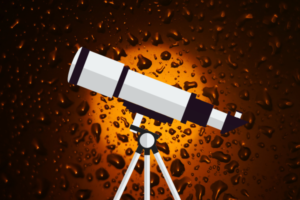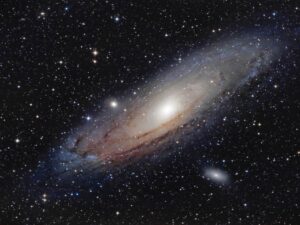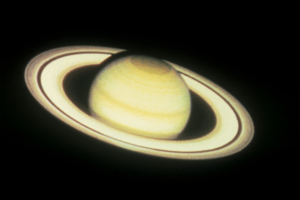How To Choose Your First Telescope
“What kind of telescope should I buy?” “How much should I spend on my first telescope?” “What are the differences between Dobsonians and Newtonians; reflectors and refractors?”
If these are the questions that you have been asking yourself lately then Congratulations! You have landed at the right place. These are some of the most common questions that almost everyone who wants to take their first steps in the world of practical astronomy asks.
Key Takeaways:
- The most important feature of a telescope is it’s aperture, which is the diameter of the light-gathering lens or mirror.
- Focal length refers to the distance between the primary lens/mirror and the point where the object is brought into focus.
- To figure out the magnification, divide the focal length of the telescope by the focal length of the eyepiece.
- Almost any telescope will fall into one of three categories: refractors, reflectors, and catadioptric or compound scopes.
- A mount is important for stabilising your telescope and determining how easy it is to follow a star while viewing it.
For most beginner astronomers finding the right beginner telescope is an extremely daunting task. The world of astronomy is a fascinating place but the process of finding the right telescopes for beginners can be filled with technical jargon, confusing features and a multitude of options.
So to help astronomers, this guide offers a simple resource for explaining what every newcomer needs to know when purchasing their new quality telescope.
The telescope you want has two essentials: high-quality optics and a steady mount. And all other things being equal, big scopes show more and are easier to use than small ones, as we’ll see below. But don’t overlook portability and convenience because you must be able to carry your telescope to your favorite observing locations.
Aperture - The most important feature of a telescope
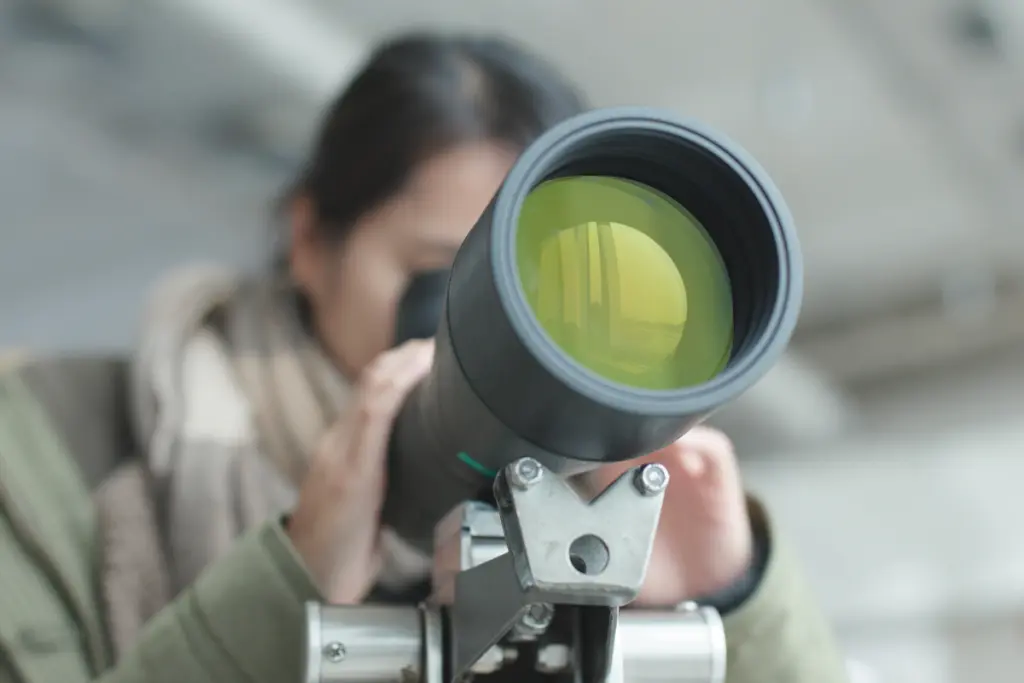
The most important feature of a telescope is it’s aperture, which is the diameter of the light-gathering lens or mirror.
The bigger the aperture, the more light it will collect, which allows you to see fainter objects. Apertures in mass-produced telescopes can vary from 2 inches to 20 inches. The aperture’s diameter will be expressed either in millimeters or, less commonly, in inches (1 inch equals 25.4 mm).
Usually the advice is to buy the biggest aperture telescope you can afford, but there are other considerations as well such as portability and ease of use.
Focal Length
Focal length refers to the distance between the primary lens/mirror and the point where the object is brought into focus. The focal length is important, because it’s a factor in how well a telescope magnifies objects.
A longer focal length is more suited for observing planets, while a shorter focal length is better for wide field views of space. The focal ratio (f/5.9 for example) is the ratio between the aperture and the focal length. Multiply the aperture by the f ratio to find the focal length.
Magnification
To figure out the magnification, divide the focal length of the telescope by the focal length of the eyepiece: If you have a 25-millimeter eyepiece and a refractor of 1000 mm, the magnification is 40 power, written as 40x (or, 1000 / 25 = 40). To avoid fuzziness, make sure to magnify a telescope to no more than twice the aperture of your telescope in millimeters (or 50 times the aperture in inches).
As we go further in answering the question – “What type of telescope should I buy?”, we can say from the outset that the best telescope is one that is practical and comfortable to use regularly, and that provides amazing views of the night sky.
Related
Types Of Telescopes
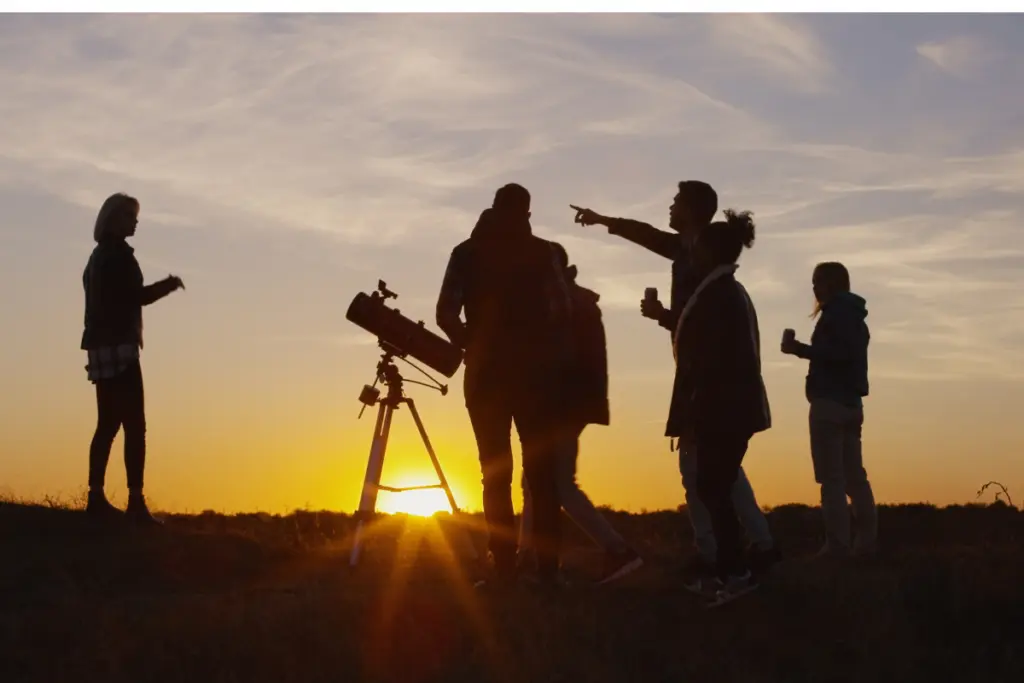
While telescopes come in many different forms, there are three general types to choose from.
Almost any telescope will fall into one of three categories: refractors (which use lenses to bend light into focus), reflectors (which use mirrors that reflect light into focus), and catadioptric or compound scopes, (which use a combination of both lenses and mirrors).
While you might hear other specific terms for telescope types mentioned, such as “Dobsonian” or “Schmidt-Cassegrain,” most of these other types are actually variants of the basic three, such as a Dobsonian being a type of reflector or a Schmidt-Cassegrain being a type of catadioptric.
Refractor telescopes
Refractor telescopes are probably the most common telescope around. They use lenses instead of mirrors and the eyepiece is located at the bottom of the telescope.
Their design is similar to binoculars and most spotting scopes. It should be noted that images from refractors are mirror images and can be corrected using an erecting prism. For beginner’s this doesn’t have a large effect on your viewing experience.
Reflector telescopes
Reflector telescopes use mirrors, which causes light to reflect at various angles within the optical tube, extending the overall light path.
This often causes reflectors to be shorter than refractors of the same aperture, as the light doesn’t need to flow in a straight line to move the same distance.
When combined with how manufacturing large mirrors is often cheaper than manufacturing large lenses, it’s fairly common for reflectors to be much less expensive than refractors at larger apertures.
Additionally, reflectors are not susceptible to color fringing in the same way that doublet refractors are. If you’re looking for a lot of bang for your buck in terms of aperture, reflectors are a great way to go. .
This is especially true for Dobsonians which come with their own easy-to-use rocker-box mount.
Catadioptric telescopes
Catadioptric telescopes combine the optical benefits of both lenses and mirrors into a compact, convenient package, being smaller and more portable than either refractors or reflectors of the same aperture.
This is made possible by the corrector plate that folds the light path and the curved secondary mirror that magnifies the light internally. There are many variations on this design, including Schmidt-Cassegrains and Maksutov-Cassegrains.
Since it uses mirrors much like a reflector, a catadioptric scope will require collimation. However, unlike with reflectors, this procedure needs to be performed far less frequently.
If well taken-care of, a compound scope can go for years without requiring collimation.
The catadioptrics’ small size and portability give them a convenience not found in reflectors of the same class, making them a great investment for both beginners and experienced astronomers alike.
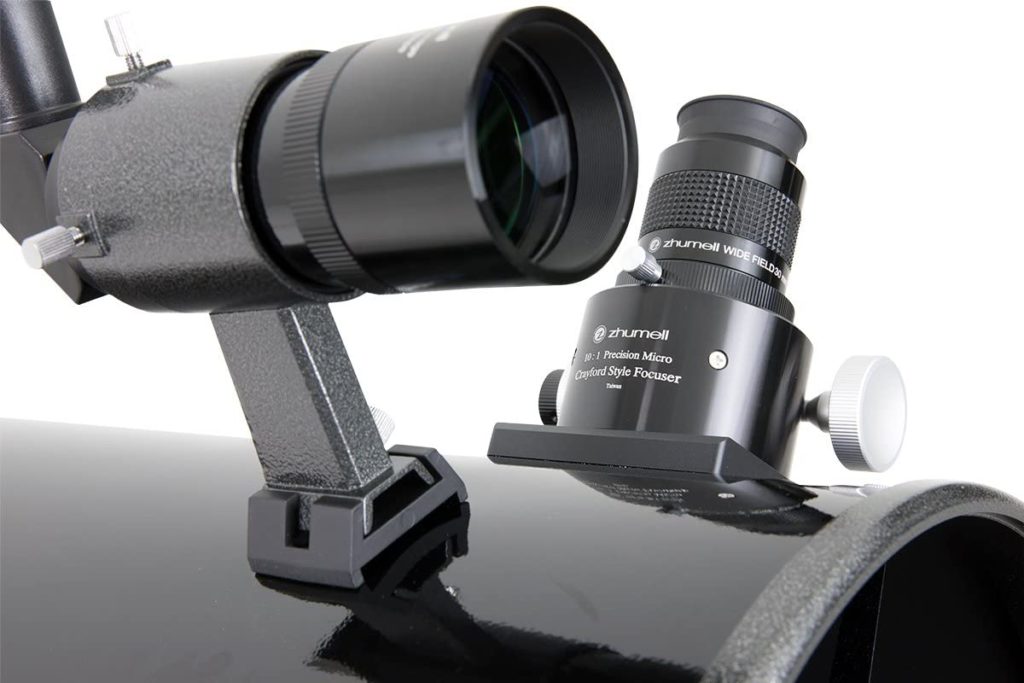
Apart from the differences in features of the Cassegrain, Reflector and Refractor Telescope, it may also be important to note the sizes of telescopes and once again, consider how you are going to use your telescope.
Will you be taking your telescope with you on road trips? You might want to get a Refracting Telescope for its portability. If your telescope will be kept at home and you would like a higher aperture scope to view deep sky objects, a Dobsonian might be a cost-effective, though bulky option.
All three designs are available as basic models or with fully computerised controls and even built-in wi-fi for operation via smartphone.
A grab and go’ simple setup may best suit your needs, or you may want more complicated equipment with fully automatic operation to reveal more wonders of the night sky.
Mount - A Very Important Part Of The Telescope
Now that you know what type of telescopes are out there, let us discuss an often overlooked but very important aspect – the mount. A mount is important for stabilising your telescope and determining how easy it is to follow a star while viewing it.
A telescope mount has two primary functions:
- Support the telescope firmly so that objects can be viewed and photographed without vibrations
- Provide a system for smooth controlled movement to point and guide the instrument
Some types of telescopes are better suited for a particular type of mount. There are 4 main types.
1. Altazimuth Mounts
Altazimuth (sometimes called alt-az) is the simplest type of mount with two motions, altitude (vertical) and azimuth (horizontal): thus the name Altazimuth.
Good Altazimuth mounts have slow-motion knobs for making precise adjustments, aiding smooth tracking across the sky.
These type mounts are generally good for terrestrial observing and for scanning the sky at lower power but not for deep sky photography.
Some Altazimuth mounts are now computer driven and allow a telescope to track the sky more accurately. This is generally good for visual use but can lose tracking on longer exposure astrophotography.
2. Dobsonian Mounts
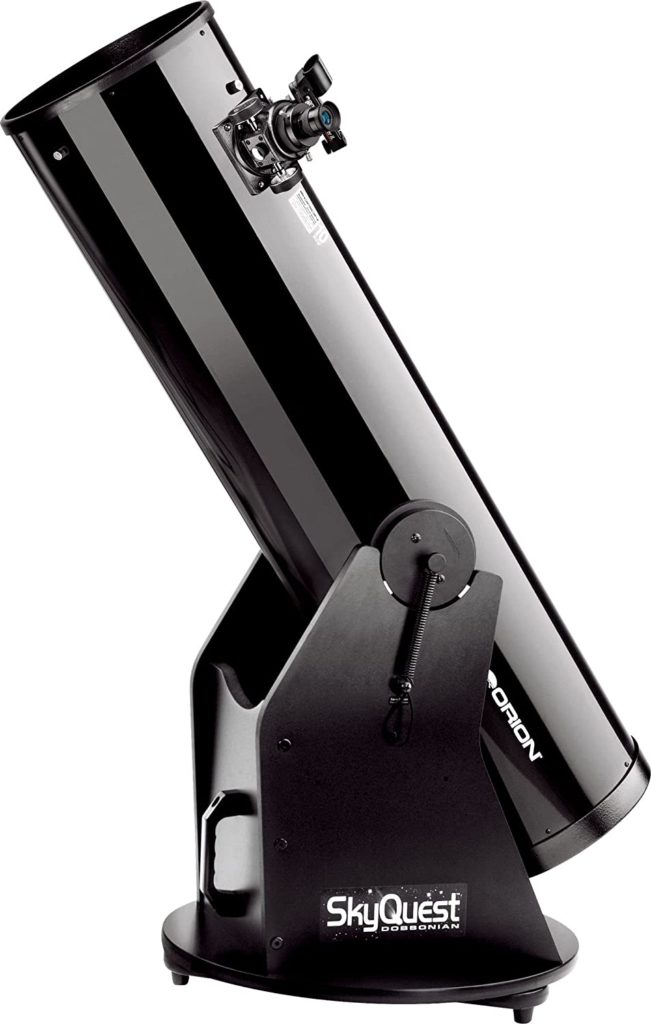
The Dobsonian mount is a newer, modified version of the Altazimuth mount. This mount was invented in the 1970’s by John Dobsonian. Dobsonian mounts are mounted on the ground by a heavy platform, and designed to support massively sized Newtonian Reflectors, while keeping a steady image.
It is common for Dobsonian telescopes to have very large apertures – anywhere between 6 and 20+ inches.
3. Equatorial Mounts
Equatorial mounts are superior to non-computerized Altazimuth mounts for astronomical observation over long periods of time and absolutely necessary for astrophotography.
As the earth rotates around its axis, the stationary stars appear to move across the sky. If you are observing them using an Altazimuth mount, they will quickly float out of view in both axes.
A telescope on a properly aligned equatorial mount can be aimed at a celestial object and easily guided either by either manual slow-motion controls or by an electric motor.
4. Fork Mounts
A fork mount is designed for shorter tube telescopes (usually the compound type). They are motorized and do not require a counterweight since the telescope is balanced at its center of mass. But they are often heavier than other types of mounts.
Some telescopes come with small motors to move them around the sky with the push of a keypad button.
In the more advanced models of this type, often called “Go To” telescopes, a small computer is built into the hand control.
Once you’ve entered the current date, time, and your location (and many newer models don’t even require you to do that), the scope can point itself to, and track, thousands of celestial objects.
Eyepieces
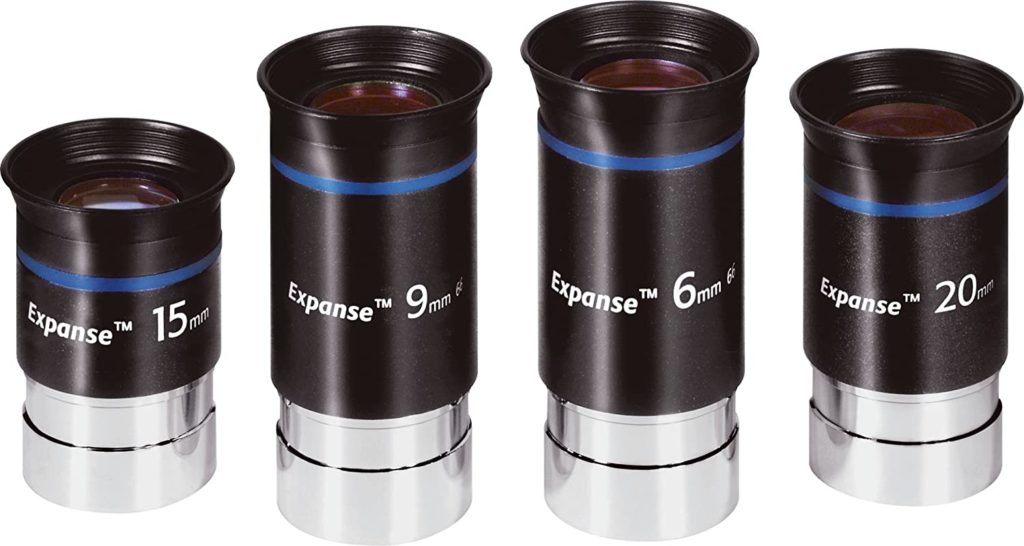
The optical elements of eyepieces allow you to focus light collected by a telescope, so you can observe a sharp view of the object or area where the telescope is pointing.
It may seem like a small link in the chain, but it has a large effect on your telescope’s optical system, and finding suitable eyepieces will greatly enhance its potential.
Eyepieces come in focal lengths ranging from 2mm to 56mm.
The Focal Length is an important specification to consider when determining the magnification, also known as power, of an eyepiece and the telescope it’s being used with. The following formula will help you determine the magnification based on your eyepiece and telescope’s specifications:
Magnification = Telescope Focal Length (mm) / Eyepiece Focal Length (mm)
For example:
A 25 mm eyepiece on a 2000 mm telescope (2000/25) gives you 80 power (80x), this makes objects appear 80 times closer to you through the telescope than they appear to your unaided eye.
Barlow Lens
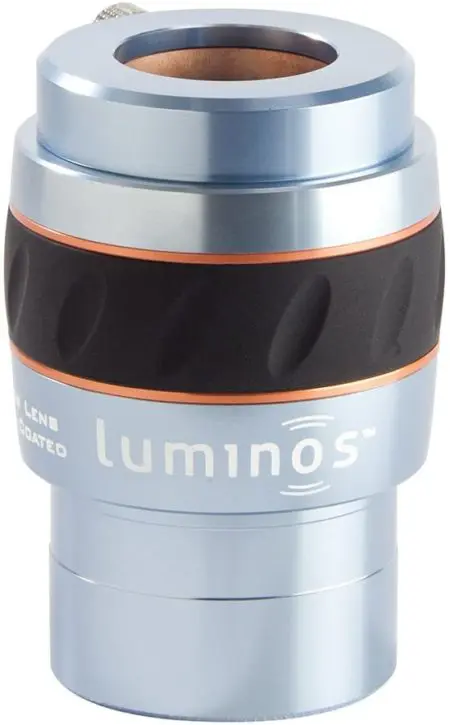
A Barlow lens is a cost effective way to increase the magnification of your eyepieces.
A Barlow lens is a concave lens that when placed between a telescope’s objective lens or mirror and the eyepiece, will increase the magnification of the telescope.
A Barlow lens will connect directly to your eyepiece. The most common Barlow is the 2x Barlow. A 2x Barlow will double the magnification of the eyepiece it is attached to.
For example, if you were using a 20mm eyepiece on a telescope with a 1000mm focal length, you would have 50x magnification. If you attach a 2x Barlow lens to that eyepiece you will double the effective magnification of that eyepiece to 100x.
Finderscope
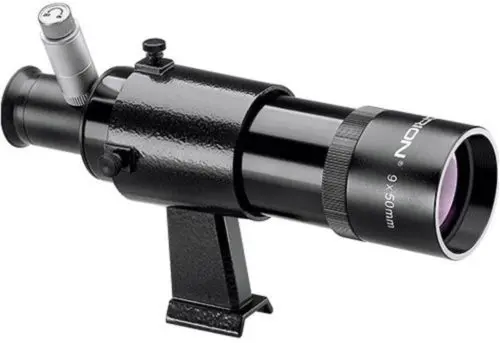
A finderscope is a small wide-field telescope mounted on a larger telescope that helps an observer quickly aim at terrestrial or celestial objects.
Because of their light gathering capacity, finder scopes are especially useful for finding faint celestial objects that cannot be seen with the unaided eye using non-magnifying finders such as a Telrad or red dot finder.
Many telescopes come only with a non-magnifying finder, while others come with a simple low-cost, low-aperture finder scope that gives dim, inverted views that make it difficult to use.
Conclusion
So which scope is right for you? In most cases you’re going to want the largest telescope that you can reasonably afford and carry. However, you might have specific needs that could make one scope or another more worthwhile for you personally.
If you want to do deep-sky observing or wide-field astrophotography of distant galaxies and nebulae, you might want to consider picking up a large reflector.
If you want a high degree of flexibility in what you observe, a Schmidt-Cassegrain or other compound telescope will give you a lot of options for how to target your viewing and imaging experience.
If you carefully weigh their benefits and considerations, while also keeping your budget in mind, you should be able to choose a scope that will help you get the most enjoyment you can out of the night sky.
We hope you find this information helpful as you pick out your first telescope. Below are a few of our favorite telescopes for beginners.
Orion 8945 SkyQuest XT8 Classic Dobsonian
For many astronomers who are just getting started, dobsonian reflector telescopes are a popular choice.
The Orion XT8 dobsonian is a mid-range reflector telescope. There are a few smaller and less expensive models available in Orion’s classic dobsonian series, and there are a few larger, more expensive models as well. The XT8 offers a good balance between portability, price and performance.
Celestron – AstroMaster 130EQ Newtonian Telescope
The Celestron Astromaster 130 EQ is a Newtonian reflector telescope with 130mm primary mirror and focal length of the 650mm. This focal ratio is very popular among beginners because it can provide wide angles of view and mirror which gather enough light to see “almost everything” in space.
Celestron – NexStar 5SE Telescope – Computerized Telescope
Celestron NexStar 5SE is a beginner level GoTo telescope. When you are on a tight budget and just trying to enter into the astronomical world, then this could be an ideal option. This is one of the best and affordable telescopes for newbies and experts as well.
Also check out the 4SE and the 8SE.
ABOUT US
We are a team of active amateur astronomers, here to help you with all your astronomy and science related needs – this is anything, from reviewing the latest telescopes to be released to talking about gravity and neurons. The Big Bang Optics was started because of our love for astronomy and to help others like us find the best telescope and accessories.
LEGAL DISCLAIMER
The Big Bang Optics is a participant in the Amazon Services LLC Associates Program, an affiliate advertising program designed to provide a means for sites to earn advertising fees by advertising and linking to Amazon.com. The Big Bang Optics also participates in affiliate programs with Clickbank and other sites. The Big Bang Optics is compensated for referring traffic and business to these companies.

